Astoari ezin mendeka, mendeka albardari.
Unable to take it out on the donkey, take it out on the saddle.
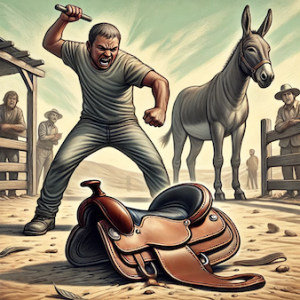
These proverbs were collected by Jon Aske. For the full list, along with the origin and interpretation of each proverb, click this link.
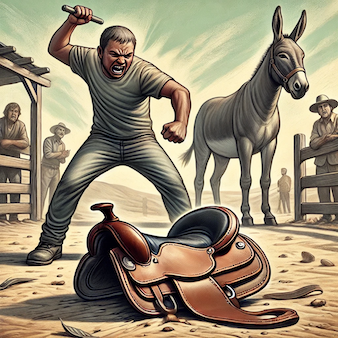
Astoari ezin mendeka, mendeka albardari.
Unable to take it out on the donkey, take it out on the saddle.


Rediscovering Gatibu at Jaialdi was a great experience, but Lisa, Rose, and I were also blown away by a band I’d never heard of before: Neomak. Opening for Gatibu in the Idaho Central Arena, Neomak both had a more traditional sound than Gatibu – trikitixa, tambourines, and drums – but pushed that sound in new and innovative ways. The steady drum beat instilled an energy that was only rivaled by the women dancing and singing on stage. Another band I would highly recommend.
A full list of all of Buber’s Basque Facts of the Week can be found in the Archive.
Primary sources: Neomak, Wikipedia
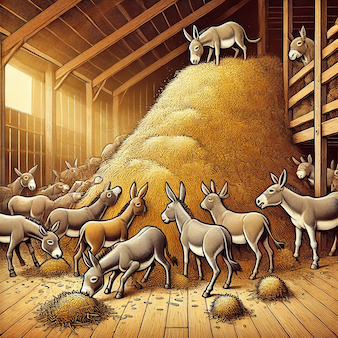
Asto askok, lasto asko.
A lot of donkeys need a lot of hay.
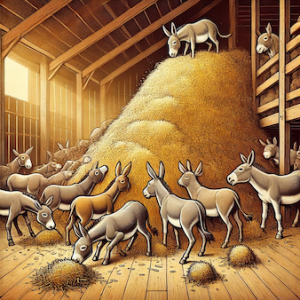
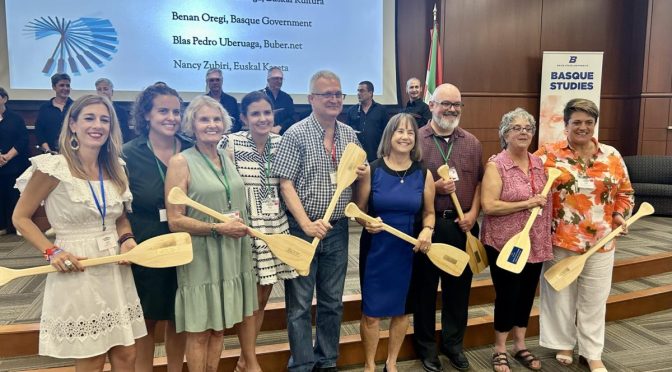
The theme of the Zortziak Bat symposium that was held during Jaialdi was Elkarrekin Arraunean, or “Rowing Together,” highlighting the contributions of so many people that have helped promote and support the Basque language and culture. Seven people were honored for their lifetime of effort – I was pleased to be one of those recognized. But I was also humbled to be in the presence of such a great group of people, people who have done so much for Basque culture.
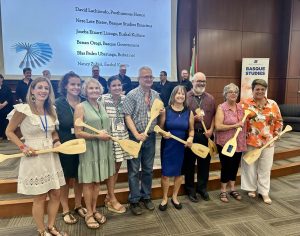
A full list of all of Buber’s Basque Facts of the Week can be found in the Archive.
Primary sources: Joseba Etxarri, Basque Museum and Cultural Center; Remembering former Basque studies program director David Lachiondo, Boise State University; Zortziak Bat Symposium Honors Basque Culture Builders at Boise State during Jaialdi 2025 by Robert Lopez, Euskal Kazeta

Askoren mina, tontoen atsegina.
Only the stupid find consolation for their suffering in the suffering of others.


I have a dream of slowly migrating the original parts of this site – the parts you can find with the menu on the left of each page – to the more modern blog format of the newer version of Buber’s Basque Page. One of my first forays was to copy my translation of MG Ramos’s De Astronomástica Vasca, a treatise from nearly 100 years ago about the Basque names for the sun and moon. In doing a little searching on what new information there might be, I stumbled upon this cool story about how a star and its exoplanet were given names in Euskara, a first for the language.

A full list of all of Buber’s Basque Facts of the Week can be found in the Archive.
Primary sources: Dos sistemas planetarios reciben nombres en euskera y catalán, SINC
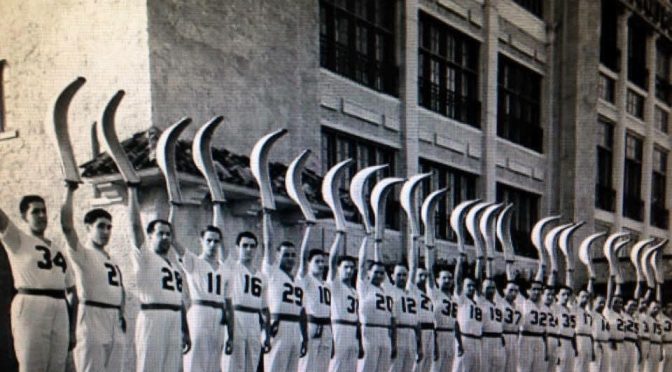
In celebration of Basque Diaspora Day 2025, which on Monday, September 8 in Markina, Bizkaia, will recognize the contribution of pelota to the Diaspora, the authors of this blog publish the previously untold story of the jai-alai player from Eibar, Agustín Guisasola, a World War II veteran with the United States Army.
This year, the International Day of the Basque Diaspora 2025 is being celebrated in Markina (Bizkaia). This year’s celebration pays tribute to the Basque pelotaris who brought “jai-alai” or cesta punta to courts all over the world. Among those young men who pursued their professional careers in America was Agustín Guisasola of Eibar, whose life story exemplifies the intersection of sport, emigration, and commitment to his adopted country.
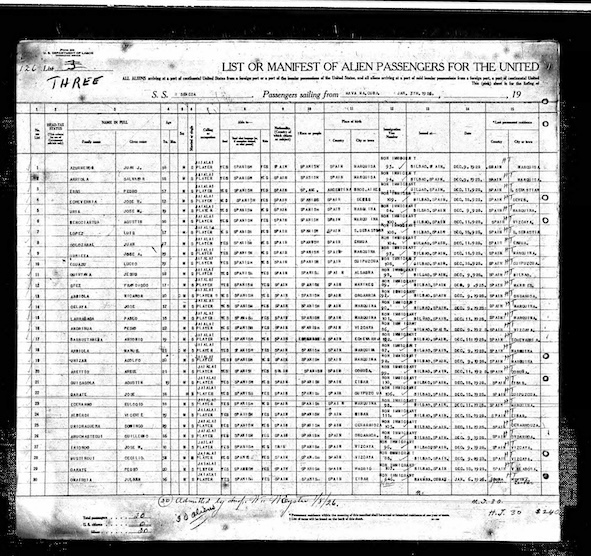
Born in 1906 in Eibar, Gipuzkoa, Guisasola set sail for Florida, United States (U.S.), at the age of 19 as part of a large group of professional jai-alai players who inaugurated a second fronton in Miami, the Biscayne, on April 1, 1926. Its opening was warmly received by the local press as a major event, which even included Basque traditional dances performed by the young puntistas. The first court, the Hialeah, inaugurated in January 1925 in the city of Hialeah in Miami-Dade County, was forced to close after its first season due to the success of the Biscayne. The Biscayne had become a cultural and sporting landmark in Miami.
Just a few months later, in September 1926, a devastating hurricane left the Biscayne in ruins, but it was soon rebuilt and reopened in June 1927. Nevertheless, it never returned to its former glory until it changed ownership [1]. Chronicles of the time highlight its Basque players, among them Guisasola, as the stars of a spectacle that drew thousands of spectators in South Florida.
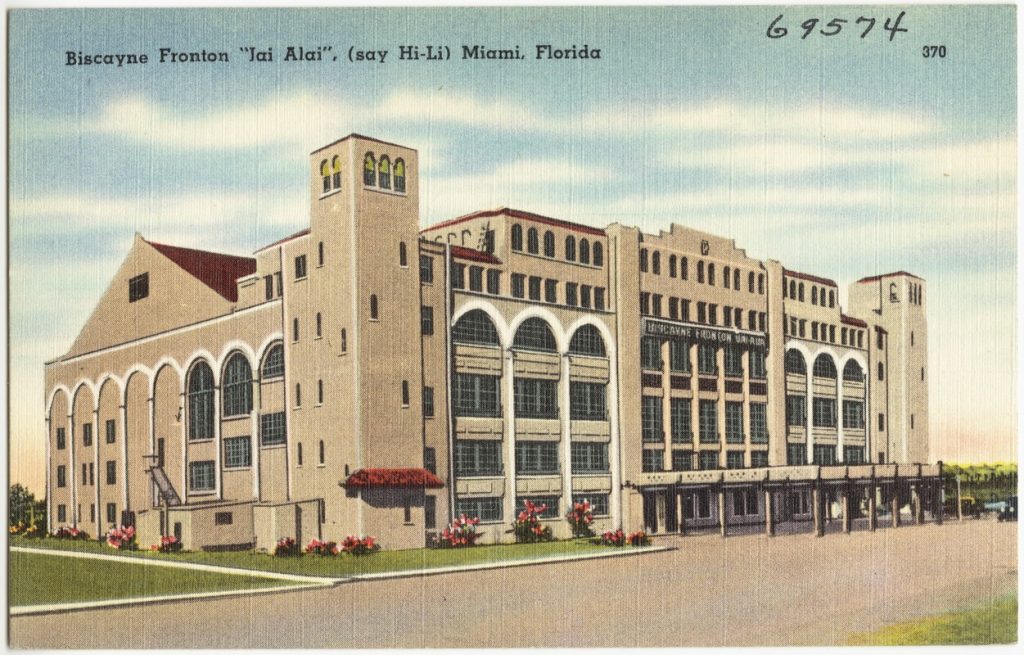
Agustín also took part in the inauguration of the Summer Casino in Havana in 1928, and in 1930 he played at the Habana-Madrid court, also located in the Cuban capital.
In 1928, Agustín married French-born Therese Yvonne Savoli in New York. During the 1930s the couple alternated their residence between the United States and France. Upon returning to New York, he played—already a veteran—at the Biscayne until 1940 and afterward worked in the textile industry. Naturalized as a U.S. citizen in 1943, only a few months later, in October, he enlisted in the United States Army during World War II (WWII). He is very likely the first and only professional Jai-Alai player (identified to date) who served with the United States during WWII.
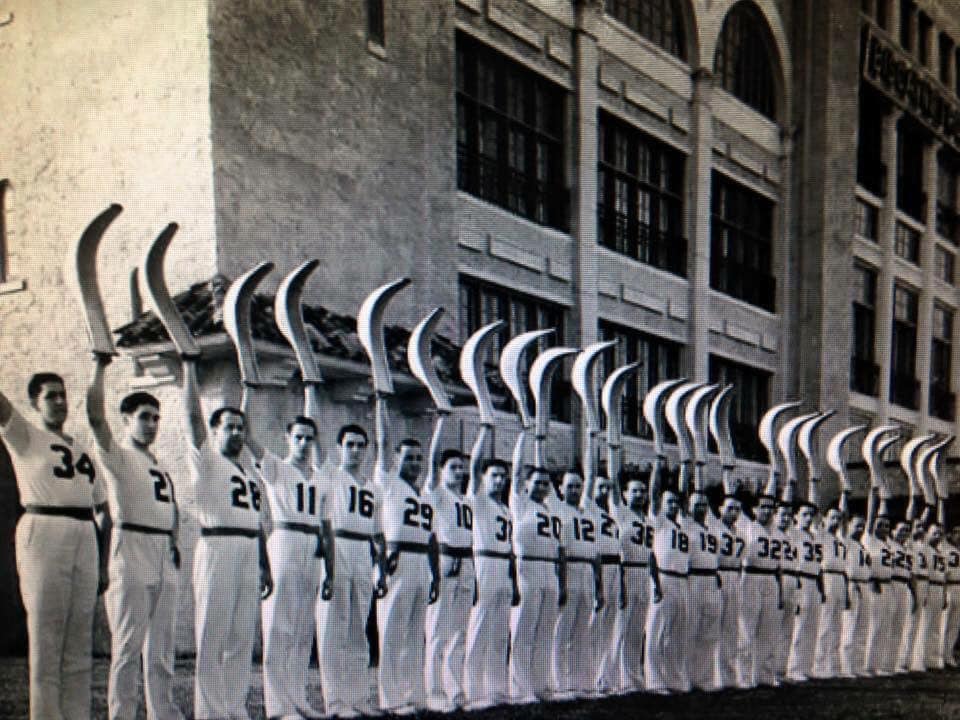
After the war, Agustín and his wife continued to reside in New York, and later in Florida, where he passed away in 1982 at the age of 76.
The story of Agustín Guisasola is that of an emigrant whose trade was pelota, who participated in the early days of cesta punta in America and who, when the time came, put on the U.S. uniform to fight under his new flag. His name is now added to the nearly 2,100 Basque and Basque-American veterans of WWII whose memory we seek to preserve and honor.
If anyone has photographs, newspaper clippings, or memories of Agustín Guisasola as a jai-alai player in Miami or Havana, we would be most grateful if you could contact us at sanchobeurko@gmail.com. A photograph of him would be a valuable testimony to accompany his story and enrich our project to preserve the memory of the Basques in World War II.

Tomorrow, September 8, the anniversary of Juan Sebastián Elcano‘s circumnavigation of the globe, is the International Day of the Basque Diaspora. This day is meant to highlight the contributions the Basque diaspora have made to Basque culture and Basque society. The Basque Government has made an explicit effort to strengthen connections and relations with the diaspora, starting with the law of 1994 that formalized these relationships. The Basque government intends to modernize this law, as outlined in a speech given at Jaialdi.

A full list of all of Buber’s Basque Facts of the Week can be found in the Archive.
Primary sources: “Eraldoroa” Four-Year Institutional Action Plan; El Gobierno Vasco impulsará en 2026 una nueva Ley de Diáspora para adecuarla a los retos actuales, Orain; El Gobierno Vasco remitirá en 2026 al Parlamento vasco una nueva Ley de Diáspora para adaptarla al siglo XXI, irekia

Asko dakin/k//zu, bizitzen baldin badakin/k//zu.
If you know how to live, you already know a lot.

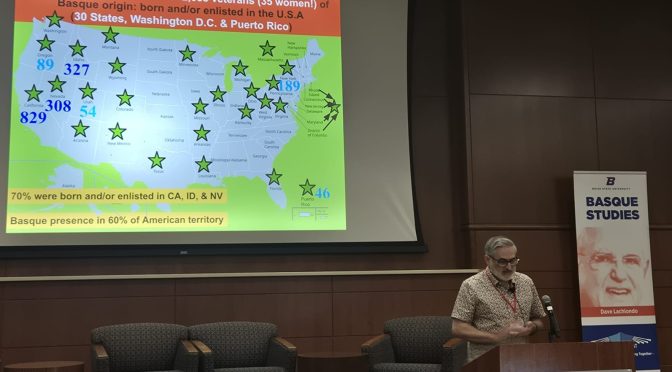

Below we publish the chronicle of the latest trip of Dr. Pedro J. Oiarzabal – co-author of this blog and co-principal investigator of “Fighting Basques: Memory of World War II” – to the United States. His trip’s goals were two-fold: to disseminate the nearly-final results of the research, on the tenth anniversary of the projects beginning, on the Basque participation in the American ranks during the last world conflict; and to deepen the work developed to date in the achievement of a monument, on American soil, to the memory of these soldiers.
The American West is the place where the hopes and dreams of thousands of Basques for generations and generations were born.
On my latest trip through Idaho and Nevada, as well as on the numerous others I have made for nearly a quarter of a century, I continue to be amazed by the depth of the Basque legacy in the American West, both in the construction of its imagery and in all the different facets of its society. The extraordinarily positive image of this legacy, which the various Basque-American communities and their institutions enjoy today, very likely does not correspond to its real weight. It is, however, an intangible heritage of incalculable value, and if managed well, it could help strengthen the future of this historic and complex American diaspora, while also enabling its members to continue choosing to connect with all things Basque.
Between the hyperbolic public image of Basque identity generated by the Jaialdi festival in Boise, Idaho – the largest Basque festival in the United States – in its eighth edition (July 29 to August 4, 2025) and the more modest annual Basque picnics in Mountain Home, Idaho and Gardnerville, Nevada, both held on the weekend of August 9 and 10, lies in some ways the situation, closer to reality, in which the Basque communities of the American West find themselves.
The Basque diaspora, whether in the United States or in any other country, historical or recent, is a vast chain in which every link is necessary for its very existence. This is also true at the local and community levels. In the postmodern identity market, choosing to identify with the Basque identity in the diaspora is similar to a small salmon struggling against the current to reach its final destination. Connecting with Basque identity and culture means contemplating the importance of the small things in life, shaped by time and the legacy of one’s ancestors, and enjoying them before they fade away irreversibly.
The American West is also the place where the descendants of those Basque emigrants who left their homes weave together, day after day, transformative complicities of the present, rooted in a distant past, and filled with unpredictable and uncertain futures. Each generation struggles to prevent everything they knew and loved from vanishing, while every action and decision they make leads them to transform their memories into present-day projects for future generations. In every dance step, in every musical note, in every bertso, and in every bite of food lie the seeds of a Basque identity laden with memories and recollections that honor the vision and actions of their parents, grandparents, and great-grandparents, in keeping their historical and cultural legacy alive.
For a decade, the non-profit Sancho de Beurko Elkartea has led the research project “Fighting Basques,” the first systematic academic study of the contributions of Basques and Basque Americans to the U.S. Armed Forces and Merchant Marines during World War II (WWII). This is a pioneering study, both in the Basque Country and in our immediate geographic context, on the role played by a minority emigrant group and their descendants up to the second degree (grandchildren of emigrants) in the last world conflict under the American flag. It is, in fact, a history of the United States during WWII through a Basque lens.
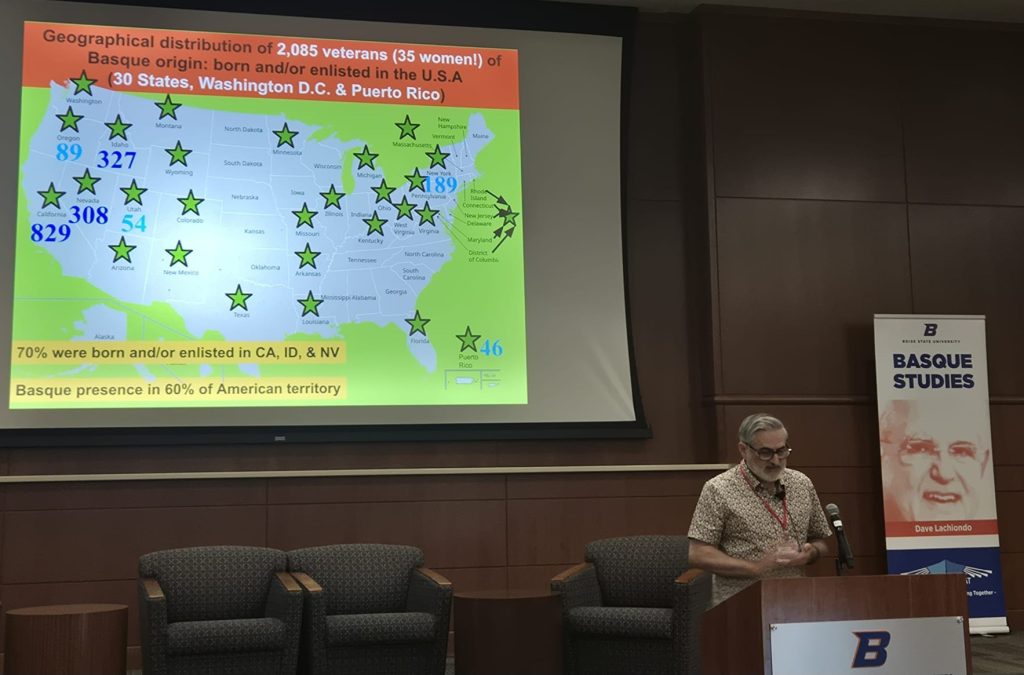
Once the study was almost completed, I had the honor of presenting its main results in Boise during the International Symposium on the Basque Diaspora “Zortziak Bat” (at Boise State University) and in Reno, Nevada at the Nevada Historical Society.
Month by month, year by year, we have been putting together the pieces of the hitherto largely unknown puzzle about the Basque and Basque-American contributions to the U.S. military forces during WWII. Today, we have identified nearly 2,100 men and women of Basque origin, born and/or enlisted in 30 states, as well as Washington, D.C., and Puerto Rico – which represents 60% of the country. Even so, 70% of them were born and/or enlisted in California, Idaho, and Nevada. (It is not surprising to find that these three states are home to the majority of the U.S. population of Basque origin today.) These 2,100 soldiers served in all branches of the military and fought on all fronts.
Furthermore, nearly 270 of these soldiers were born in the Basque Country. More than half of them were not U.S. citizens at the time of their enlistment, which speaks to their true commitment to their adopted country. Despite their participation in WWII, unfortunately many of them would not achieve citizenship.
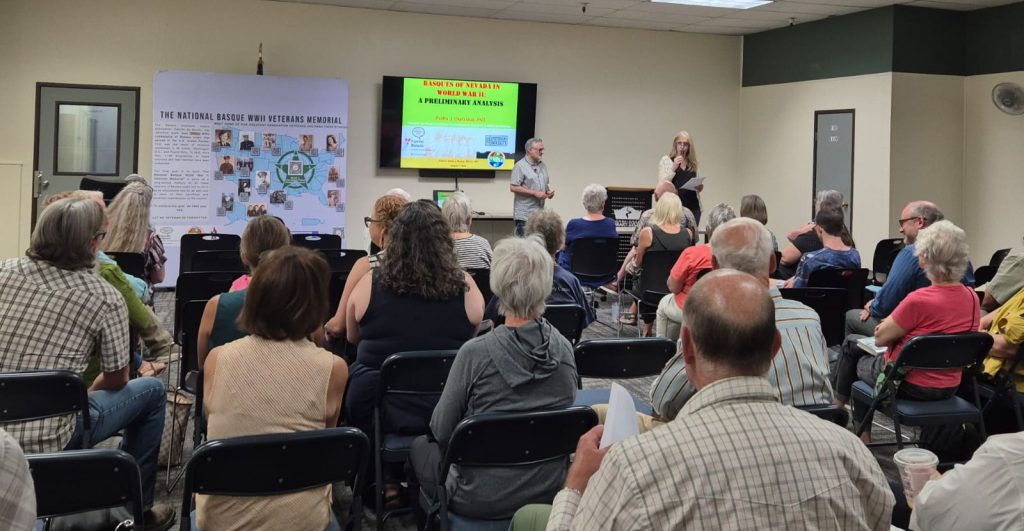
At the beginning of our research, very little, if anything, was known about the Basque participation in WWII under the U.S. flag, and even less about the number of soldiers identified to date. They were simply shadows in oblivion. It is “the greatest generation,” but also the most unknown, one that had gone unnoticed by the academic world and remained alive only in the memories of their closest relatives. Without a doubt, the most cherished moments of my trip have been related to the encounters with the children, nephews, or grandchildren of our veterans, whether in Boise, Elko (Nevada), Reno, or Gardnerville.
If the dozens of relatives I was able to speak with during my short stay in the country had one thing in common, it was their desire to demand a place for their veterans in our public history, in our collective memory. Their veterans survived the Great Depression and stood up to authoritarianism and fought for democracy, for many of them to the bitter end. This is why their families are demanding immediate public recognition.
And this is exactly what we, under the leadership of the North American Basque Organizations (N.A.B.O.), are working on, to build an official commemorative memorial on American soil to permanently honor their memory and sacrifices, with the intention of inaugurating it by the end of 2026, coinciding with the 85th anniversary of the U.S. entry into the war.
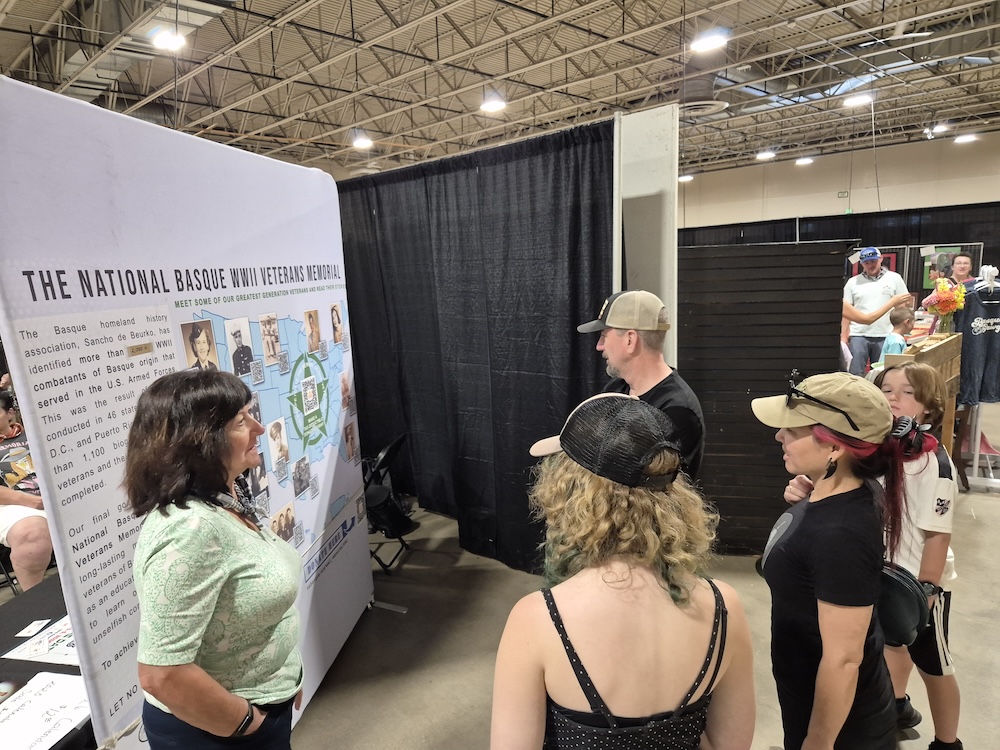
Finally, before my trip came to an end, I visited the small cemetery of the California town of Coleville, in Antelope Valley, where I paid a small tribute to three veteran brothers, whose father was Basque and whose mother was Native American, and who are part of a little-studied chapter of Basque history in the American West.
There are not many Basque-Native American veterans who participated in WWII, but they tell a story of understanding between seemingly very separate cultures, but undoubtedly very close in their experiences of nomadic life, dispossession, and extreme survival in the deserts and high-altitude mountains of both Nevada and California.
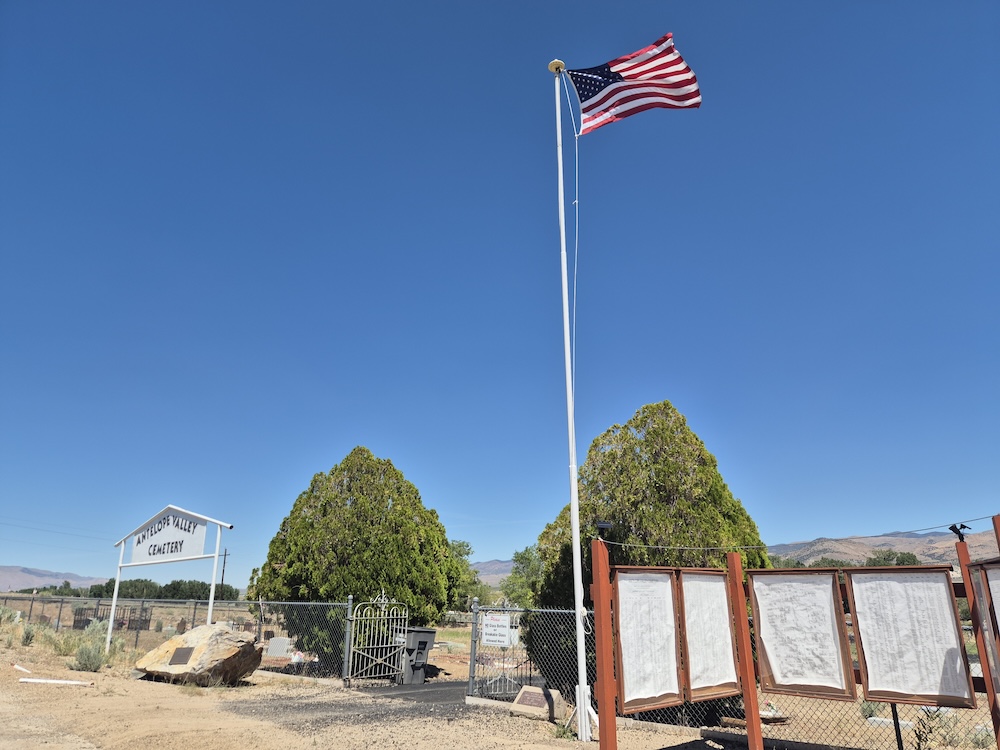
I would like to remind you that N.A.B.O. has launched a fundraising campaign with the aim of building the National Basque WWII Veterans Memorial in honor of all WWII veterans of Basque origin.
To achieve this goal, we need your help. It requires all of us – individuals, companies as well as public institutions – to make this worthy initiative a reality.
DONATE NOW! Don’t let veterans be forgotten!
